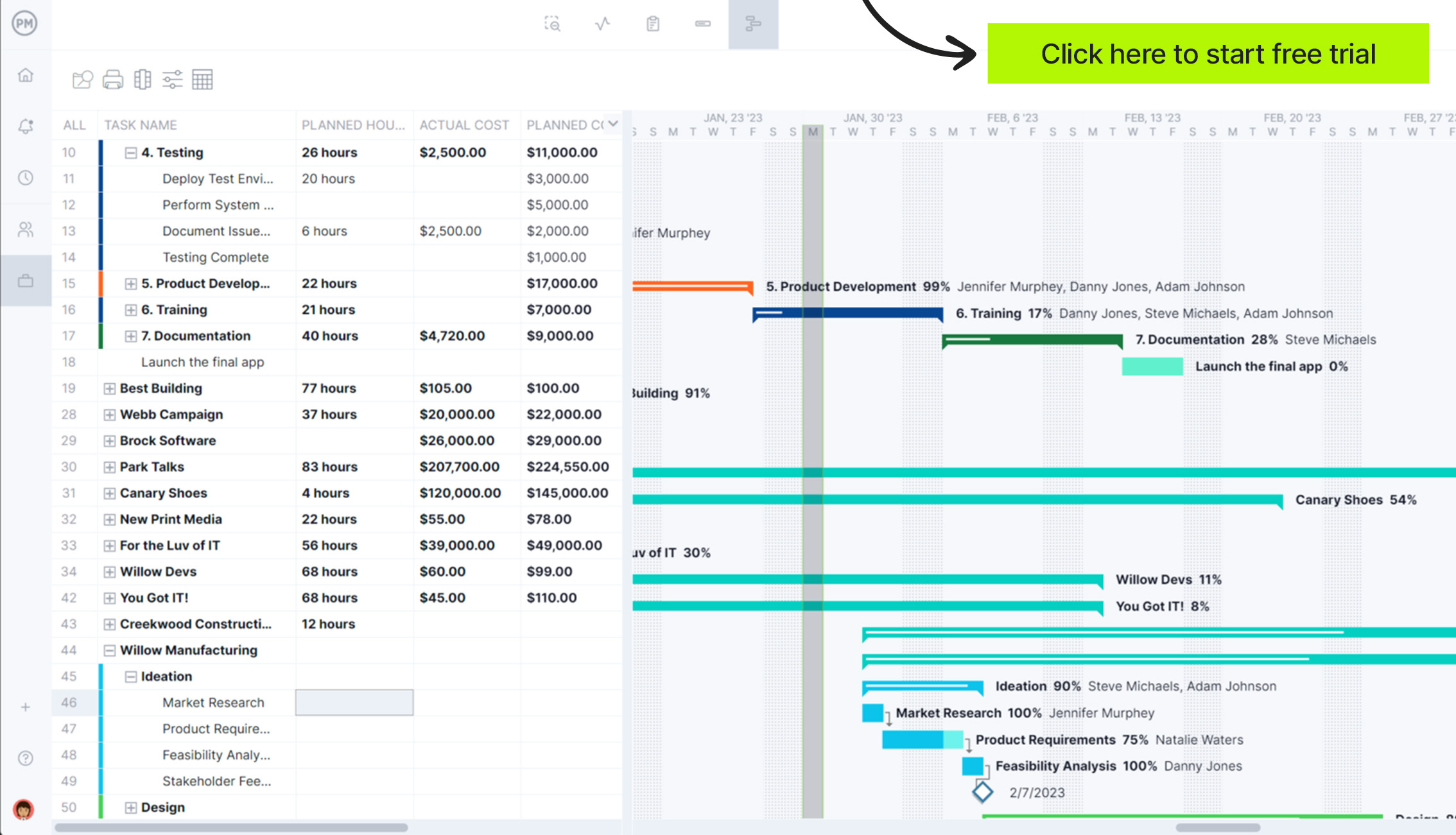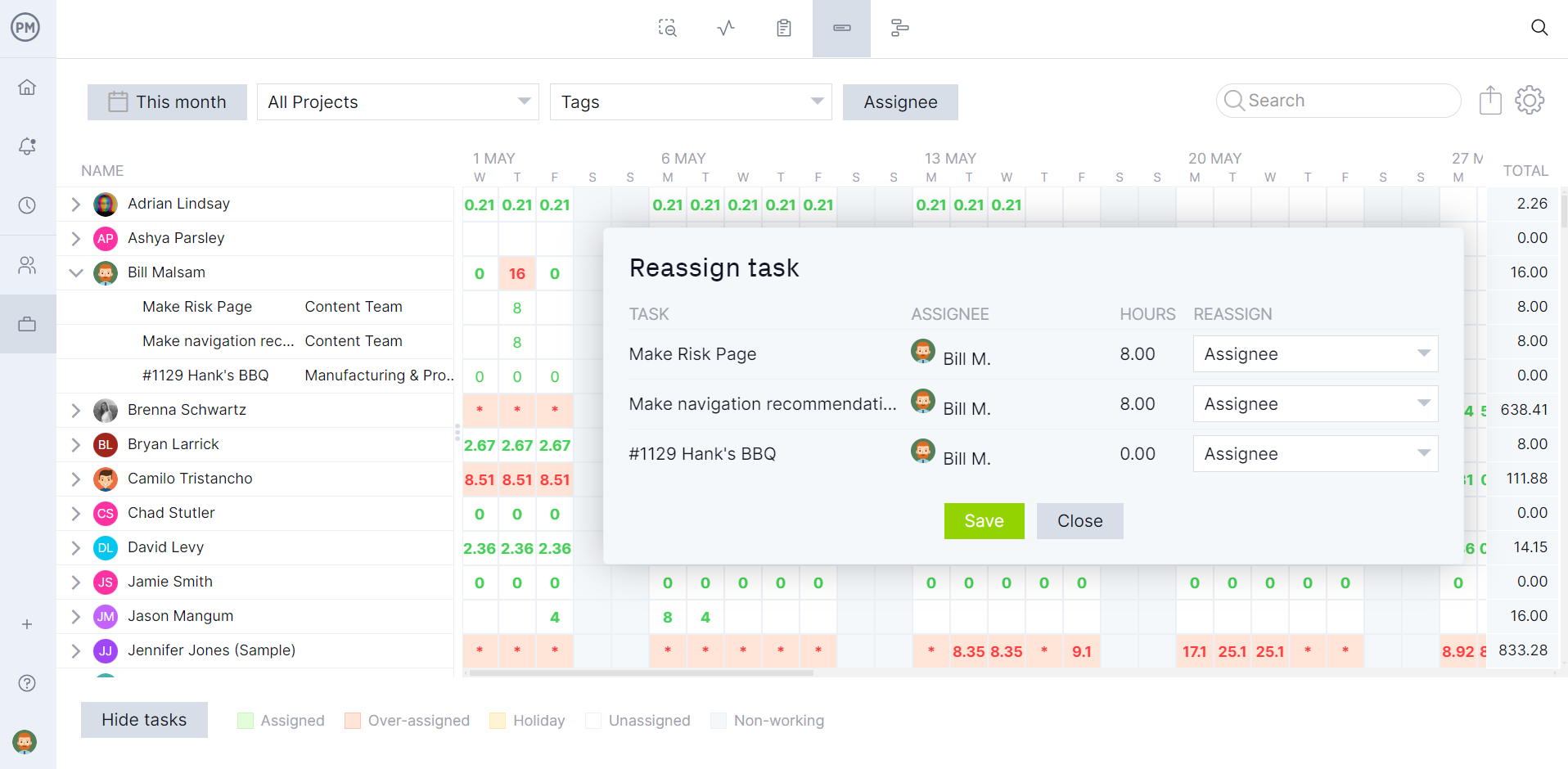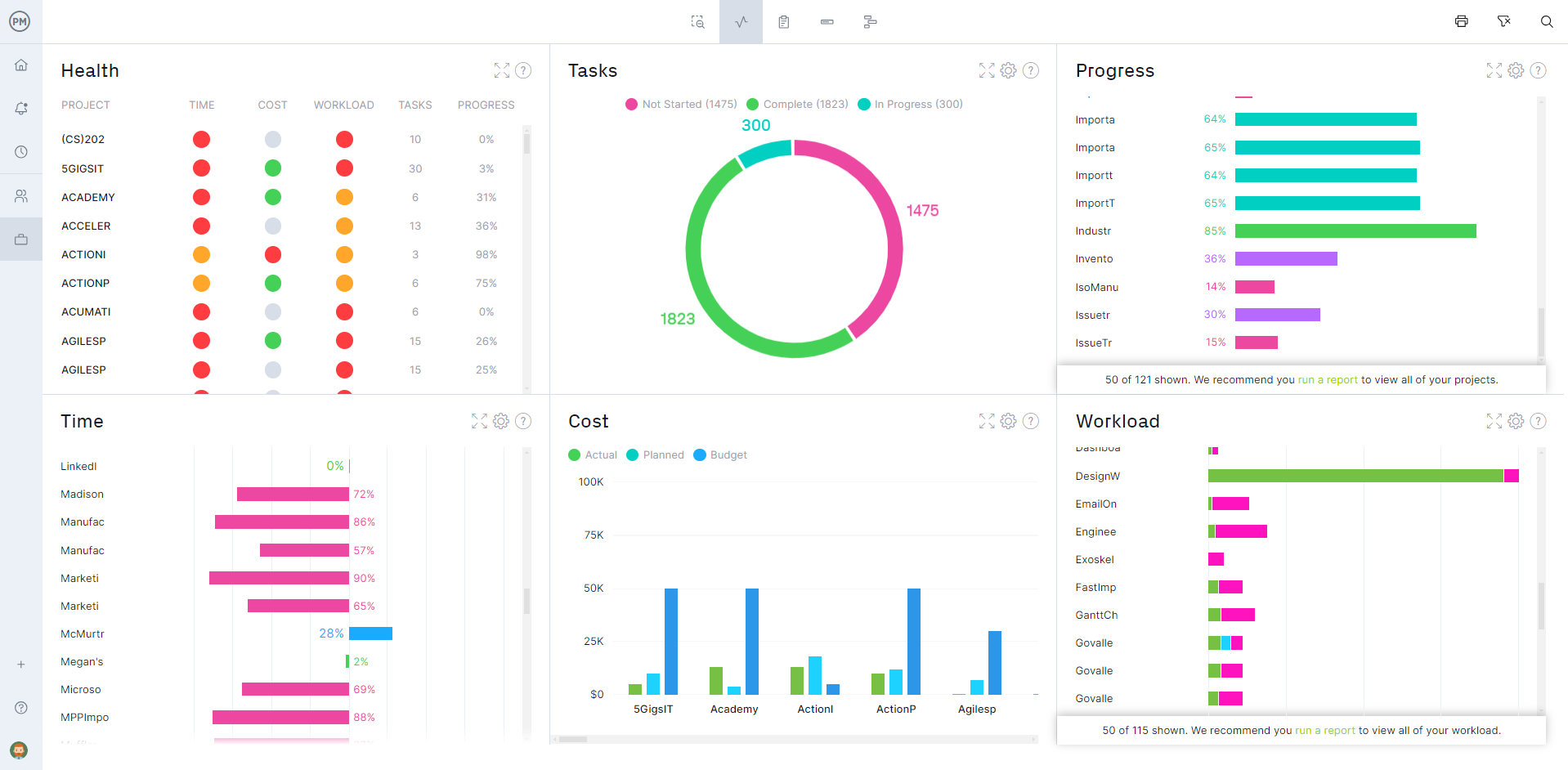Organizations have strategies to achieve their long-term goals, whether that’s to increase sales, launch a new product or build new facilities. Projects help execute those strategic plans, and organizational project management is the framework that aligns that work to the organization’s objectives.
Let’s start by digging deeper into the definition of organizational project management and the various components that make it up. Then we’ll explore some types of organizational projects, who oversees them and the challenges organizations face executing those projects.
What Is Organizational Project Management?
Organizational project management (OPM) is used by organizations to better execute their strategies by aligning the project, program and portfolio management practices with the organization’s objectives. This approach lends itself to all project management methodologies, from a traditional waterfall approach, agile environment or hybrid.
When an organization uses organizational project management, it can help manage their projects, programs or portfolios in several ways. For example, it helps with selecting, defining and delivering projects. It can also improve estimating, deliver projects closer to the planned deadlines and achieve better performance and results.
Other benefits include reducing waste, improving overall productivity and making more informed decisions. Organizational project management also helps manage resources across multiple projects, whether those are internal or external resources. However, this can only be achieved with powerful project management software with features that help project portfolio management.
ProjectManager is award-winning project and portfolio management software that has robust roadmaps that can group and organize all the projects in a program or portfolio and display them on one Gantt chart, which has resource management, time tracking and task management features. Users can filter by assignee, project manager or customer to make forecasts, view which projects are open and who’s assigned to tasks and highlight key metrics for stakeholders. Get started with ProjectManager today for free.

Components of Organizational Project Management
Organizational project management oversees three domains including projects, programs and portfolio management. While those are the main three, smaller parts make up these three components. Some of those components are organizational structure, project planning and investment management. However, they all fall under one of the three main components of organizational project management, which we explain below.
Project Management
Project management is the process of planning, organizing and managing resources to deliver a project on time, within budget and meeting quality expectations. All types of businesses use project management to achieve short- and long-term goals. This is done by a variety of skills and techniques, led by a project manager and includes defining project scope, identifying deliverables, managing risks and effective communication across teams.
Program Management
Program management is similar to project management, only it involves managing multiple projects that are related and aligned with the business objectives. The goal is to improve organizational performance. A program manager oversees this process. Program management is found in many industries, such as business, government and non-profit. It involves strategic planning, program governance, resource management, status reporting, direction setting and problem-solving.
Portfolio Management
Portfolio management is like program management only the multiple projects it oversees aren’t necessarily related. According to the Project Management Institute (PMI), it “ensures that an organization can leverage its project selection and execution success. It refers to the centralized management of one or more project portfolios to achieve strategic objectives.” It’s used to bridge the gap between an organization’s strategy and its implementation.
Types of Organizational Projects
In broad terms, there are three types of projects in organizational planning. They are capital, operational and strategic projects. Let’s take a closer look at each.
Capital Projects
Capital projects, also known as capital improvement projects, tend to be large-scale, long-term investments that involve significant planning and resources to improve or add to an existing asset. These are usually permanent structural changes that can increase the value of an asset, extend its life or enhance its capabilities. These organizational projects are found in both the public and private sectors. Examples of capital projects include manufacturing plans and office buildings in the private sector and roads, railways, power plants and libraries in the public sector.
Operational Projects
Operational projects are used to identify processes that can be improved and then execute a project to exploit that opportunity. Examples include implementing new technologies or developing a new procedure that boosts efficiency and productivity. Examples of operational projects are implementing a new inventory management system, improving supply chain logistics, updating an organization’s IT infrastructure or streamlining its customer service processes.
Strategic Projects
Strategic projects, also called key initiatives or priorities, are major initiatives that help an organization achieve its long-term goals and objectives. These projects differ from organizational projects, which focus on the day-to-day functioning of a company.
Once a SWOT analysis at a strategic planning meeting takes place, businesses can choose strategic projects. A business plan, budget and responsibilities by the leadership team define them. Examples of strategic projects include a new product launch, entering new markets, creating a new retail, branch or division, etc.
Who Oversees Organizational Project Management?
Many professionals are tasked with overseeing organizational project management. Here are a few key groups and people responsible for operational project management.
Project Management Office (PMO)
A project management office (PMO) is a group within an organization or outsourced by the organization to help projects by providing support and making sure the projects comply with best practices and standards. The goal is to maximize the value of the projects and ensure that they remain aligned with the organization’s strategic goals. There is a PMO manager who is the operational leader responsible for managing and implementing processes and methodologies as well as overseeing project managers to make sure projects are delivered on time, within budget and meeting quality expectations.
Project Portfolio Managers
A project portfolio manager is responsible for managing a portfolio of projects to achieve the organization’s goals and objectives. This role evaluates projects and programs strategically, choosing which to prioritize and allocating resources effectively. They help select projects and deal with budgets, risk and reporting.
Project Managers
A project manager is responsible for the planning, executing and closing of a specific project. They aim to deliver that project on time and within budget, meeting quality standards. Project managers oversee the day-to-day activities of the project, driving the strategy, managing resources and resolving issues as they arise. They also report to stakeholders on the project’s progress.

How to Manage Organizational Projects
Managing one project is hard enough, but things get complicated fast when multiple projects require on-time delivery. Plus, all these projects must provide value for an organization and align with its strategic goals. However, there’s a process to manage multiple projects. Follow these steps to deliver operational projects successfully.
1. Establish a Project Management Office
The first step is to create a PMO if there isn’t one in the organization. This service can also be contracted out to a PMO as a service company. There are many reasons why a PMO can help manage organizational projects. It creates a centralized repository for project information, which helps stakeholders stay up to date. It also can standardize processes to help project teams use reliable methods to produce consistent results. This improves efficiency and breaks down silos.
2. Select and Prioritize Projects
Selecting and prioritizing projects helps an organization achieve its goals, use resources better and build trust with its stakeholders. It can also help to reach customers first, allocate resources more efficiently, improve work quality and manage stakeholder expectations.
3. Establish a Project Intake Process
A project process intake defines the steps that the organization follows to review and accept new projects. This helps to make sure that those projects that have been selected are properly planned and organized. This avoids confusion and delays.
4. Build the Project Management Maturity
By building project management maturity (PMM), an organization’s projects can better achieve their goals, manage risk and improve project outcomes. It’s a key part of strategic planning and offers a framework for evaluating and improving project management capabilities. It can also identify gaps in resources and quality to develop a strategy to improve them.
5. Ensure Projects Align With the Strategic Objectives of the Organization
This is done by defining objectives clearly, prioritizing projects, aligning those projects and allocating resources for those prioritized projects. It also helps by assigning roles and responsibilities so everyone knows what to do. Managers track progress and encourage cross-functional teams to communicate and report on progress.
6. Manage Resources Across Projects, Programs and Portfolios
Finally, resource management is essential to successful operational projects. It is used to plan, organize and measure the use of both human and nonhuman resources so that they’re allocated and scheduled appropriately.
How ProjectManager Helps With Organizational Project Management
Organizational project management requires the same tools to manage one or multiple projects. Many project management software programs don’t have the features needed to plan, manage and track projects, programs and portfolios in real time. But ProjectManager can. It’s award-winning project and portfolio management software that has tools that PMOs, portfolio, program and portfolio managers need to plan roadmaps, allocate resources and monitor progress while keeping stakeholders informed.
Balance Workload for Greater Productivity
Managing resources across multiple projects is complicated. However, with our color-coded workload chart, managers can see resource allocation at a glance. All teams working across projects are represented on the chart, with a color to indicate if they’re over- or underallocated. Managers can then balance the teams’ workload from the chart and keep everyone working at capacity without risking burnout.

Monitor Progress, Cost and More in Real Time
Stakeholders need to be managed and the best way to do that is by keeping them informed. Our software has a couple of ways to do that while giving managers an overview of their projects. Real-time portfolio dashboards automatically collect live data for a high-level overview of time, cost, workload and more. It’s like an instant status report. Then there are customizable reports that can be generated with a keystroke. Filter them for details a manager needs or a more general picture for stakeholders. It’s also simple to share portfolio reports with stakeholders to keep them up to date.

Related Organizational Project Management Content
Organization project management is a larger topic than what has been discussed above. For those interested in learning more, follow the links below.
- Organizational Resources Basics: Managing Company Resources
- What Is Organizational Planning in Project Management?
- Organizational Process Assets: Definitions, Examples & Templates
- Matrix Organizational Structure – A Quick Guide
- How Project ERP Can Benefit Your Project-Based Organization
ProjectManager is online project and portfolio management software that connects teams whether they’re in the office, out in the field or anywhere else in the world. They can share files, comment at the task level and stay updated with email and in-app notifications. Join teams at Avis, Nestle and Siemens who use our software to successfully manage their projects. Get started with ProjectManager today for free.



